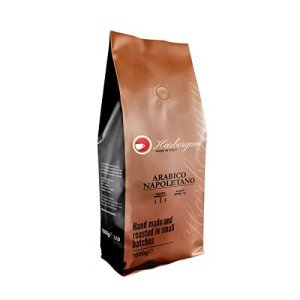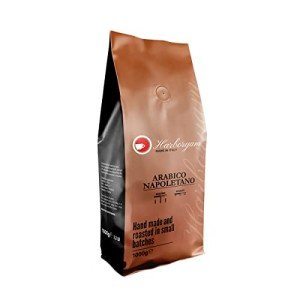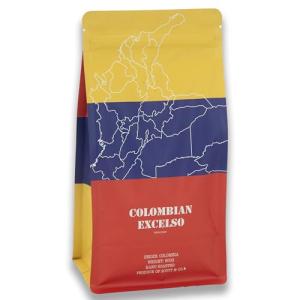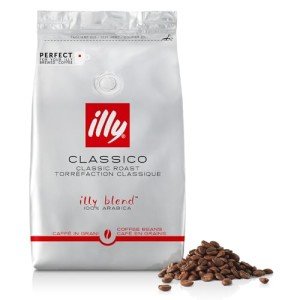Arabica coffee beans are a favorite among coffee lovers for a reason. They offer a smooth, rich flavor that’s often sweeter and more complex than other types of beans. If you're looking to elevate your coffee game, choosing Arabica beans is a step in the right direction.
Arabica Coffee Beans
Experience the rich flavors and smooth aromas of premium Arabica coffee beans to elevate your daily brew
Product List

Italian 100% Arabica Coffee 1kg
Harboryam
Product Review Score
4.86 out of 5 stars
139 reviews$20.48



Arabica Espresso Blend 1kg
Coffee Masters
Product Review Score
4.61 out of 5 stars
171 reviews$30.65


Fairtrade Arabica Whole Beans
Café Direct
Product Review Score
4.51 out of 5 stars
22 reviews$35.16


Illy Classico Medium Roast 500g
Illy
Product Review Score
4.6 out of 5 stars
65 reviews$17.35 $14.74



Organic Fairtrade Arabica Beans
Coffee Masters
Product Review Score
4.43 out of 5 stars
178 reviews$39.13

Signature Blend Coffee 1kg
Coffee Masters
Product Review Score
4.25 out of 5 stars
192 reviews$30.82
Coffee is more than just a beverage; it is a culture, a ritual, and for many, a way of life. Among the various types of coffee beans available, Arabica coffee beans reign supreme, dominating the global coffee market in both flavor and popularity. Understanding Arabica coffee beans involves delving into their origins, cultivation, characteristics, and significance in the coffee world.
What are Arabica Coffee Beans?
Arabica coffee beans (Coffea arabica) are one of the two most prominent species of coffee beans, the other being Robusta (Coffea canephora). Originating from the highlands of Ethiopia, Arabica beans account for approximately 60-70% of the world's coffee production. They are cherished for their smooth, complex flavor profiles and lower caffeine content compared to their Robusta counterparts.
Key Characteristics of Arabica Coffee Beans
Arabica beans are known for a range of characteristics that set them apart from other types of coffee beans. The following table summarizes these key features:
| Characteristic | Arabica Coffee Beans |
|---|---|
| Species Name | Coffea arabica |
| Flavor Profile | Sweet, fruity, and floral |
| Caffeine Content | Lower (about 1.5% - 2.0%) |
| Acidity | Higher acidity, often perceived as bright |
| Shape and Size | Oval shape with a curved crease |
| Optimal Growing Conditions | Higher altitudes, cool climates |
| Common Regions | Latin America, parts of Asia, Africa |
Cultivation of Arabica Coffee Beans
Arabica coffee plants thrive in specific conditions that aid in their growth and flavor complexity. Here are the primary factors influencing Arabica cultivation:
-
Altitude: Arabica coffee beans flourish at elevations between 2,000 and 6,000 feet. This altitude reduces pest populations and disease, while also promoting slower maturation of the coffee cherries, enhancing flavor development.
-
Climate: Arabica coffee prefers cooler temperatures between 60°F and 75°F (15°C to 24°C). Frost and extreme heat can severely damage the plants.
-
Soil Type: Well-drained, nutrient-rich soils are essential for healthy Arabica coffee growth. Volcanic soils are particularly beneficial.
-
Rainfall: Ideal rainfall is about 40 inches annually, with a wet and dry season that supports flowering and harvesting.
The Flavor Profile of Arabica Coffee Beans
One of the standout features of Arabica coffee beans is their rich and diverse flavor profile, which can vary significantly based on the growing region and processing methods. Here are some common flavor notes associated with Arabica coffee:
- Fruity: Berry, apple, and citrus notes are often present.
- Floral: Jasmine and bergamot can be noted, adding complexity.
- Sweet: Brown sugar, caramel, or chocolate undertones are typical.
- Nutty: Almond or hazelnut flavors can appear, contributing to a smooth finish.
Processing Methods of Arabica Coffee Beans
The methods used to process Arabica coffee beans also significantly influence their flavors. Here is a list of common processing methods:
-
Washed (Wet) Process: Coffee cherries are depulped, fermented to remove mucilage, and then dried. This method tends to enhance brightness and clarity in flavor.
-
Natural (Dry) Process: Coffee cherries are dried in the sun without removing the fruit, lending fruity sweetness and body to the coffee.
-
Honey Process: A hybrid method where some mucilage is left on the beans during drying. This can create a balance of sweetness and acidity.
Popular Arabica Coffee Regions
Various regions produce distinct varieties of Arabica coffee, each with unique flavor profiles due to differences in climate, soil, and altitude. Some of the most noted countries for Arabica coffee include:
| Country | Notable Regions | Flavor Profile |
|---|---|---|
| Ethiopia | Yirgacheffe, Sidamo | Fruity, floral, winey |
| Colombia | Huila, Antioquia | Balanced, sweet, chocolatey |
| Costa Rica | Central Valley, Tarrazú | Bright acidity, citrusy |
| Guatemala | Antigua, Quetzaltenango | Full-bodied, chocolate, spice |
| Brazil | Minas Gerais, São Paulo | Nutty, chocolate, low acidity |
FAQ about Arabica Coffee Beans
1. What is the difference between Arabica and Robusta beans?
Arabica beans are generally sweeter, with complex flavors and higher acidity, while Robusta beans are stronger, more bitter, and have a higher caffeine content.
2. How can I brew the best cup of Arabica coffee?
To brew a great cup, use freshly ground Arabica beans, filtered water, and a brewing method suited for your taste, such as a pour-over, French press, or espresso.
3. Are Arabica beans more expensive than Robusta?
Yes, Arabica beans are usually more expensive due to their growing requirements, lower yield, and higher demand for their flavor profile.
4. How do Arabica coffee beans contribute to sustainability?
Many Arabica coffee producers are adopting sustainable farming practices, such as shade-grown coffee, to promote biodiversity and environmental health.
Arabica coffee beans represent one of the most cherished varieties in the coffee world, offering a delightful blend of flavor, aroma, and craftsmanship. Their unique characteristics, influenced by factors such as altitude, climate, and processing methods, make them a preferred choice for coffee enthusiasts and connoisseurs alike. Whether enjoyed in a café or brewed at home, Arabica coffee is a testament to the rich tradition of coffee cultivation and enjoyment across cultures.